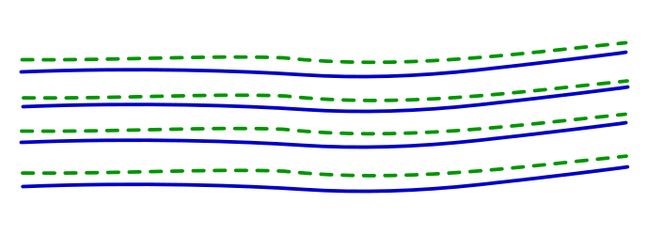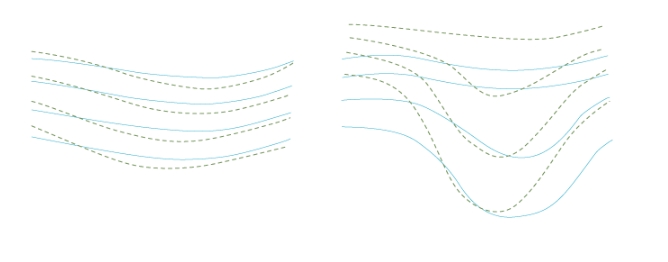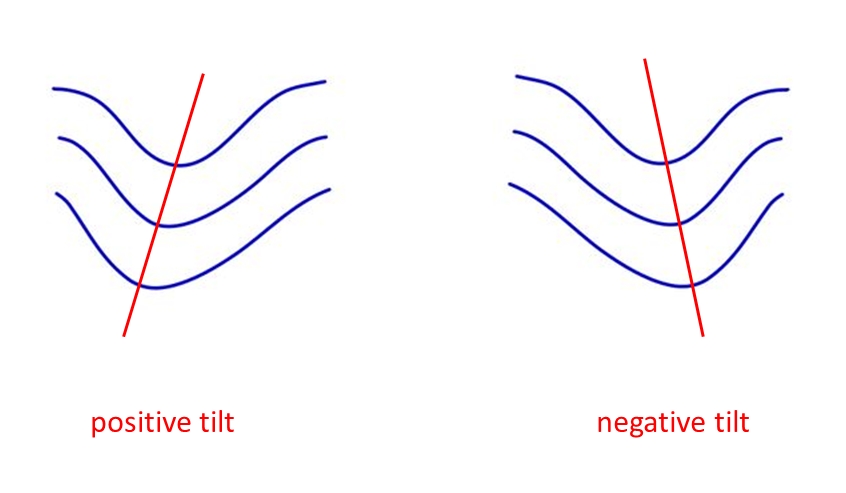What Causes Upper-Level Troughs to Develop?
As a starting point, we image a polar front that is oriented east to west in a straight line, and separates colder polar air from warmer tropical air. This front shows no or little signs of weather activity. The isolines of temperature and pressure are parallel to each other at any level above ground (see Figure 3).
Figure 3: Initial condition of the polar front before trough formation. The temperature isolines (green dotted line) and the geopotential height (blue line) are parallel to each other at all atmospheric levels.
However, when considered in a vertical cross-section, warm air masses are thicker than cold ones. As a result of this, pressure surfaces are more strongly inclined at higher levels than close to the ground (see Figure 4). Consequently, geostrophic winds will increase with height and result in jet force winds below the tropopause.
Figure 4: The inclination of isobars increases steadily with height at an air mass boundary such as the polar front. Vg is the geostrophic wind.
In reality, differential heating of the surface terrain permanently influences the polar front, as do orographic features such as mountain ranges, which deviate the westerly flow (see the training module on Lee Cyclogenesis).
When such a perturbation of the polar front occurs, such as through cold air protruding to the south or a warm air mass moving north, a shift between the thermal and geopotential wave can be observed (see Figure 5).
Figure 5: For an amplifying trough, the temperature wave (green dotted line) lags behind the geopotential wave (blue line). Both parameters are depicted at the 500 hPa pressure level.
During their formation, troughs do not exhibit a closed circulation. The trough axis is usually inclined northeast to southwest in the early phase (positive tilt) and northwest to southeast when dissipating (negative tilt).
Figure 6: Schematic of troughs with positive and negative tilt (red line). Blue lines show the geopotential height at 500 hPa.
A vertical cross-section would show the area of lowest pressure inclined backwards in the early stage and moving into an upright position towards the end of the process's life cycle. This is especially true for troughs connected with a pressure minimum at the surface level, which is caused by upper-level dynamics at jet-level (see the effect of curvature).
In some cases, the upper-level dynamics involved in the creation of a trough are not strong enough to produce an effect at ground level (for the basics see the effect of mass conservation). This is especially true when upper-level divergence is weak due to missing acceleration and deceleration of the jet stream.



